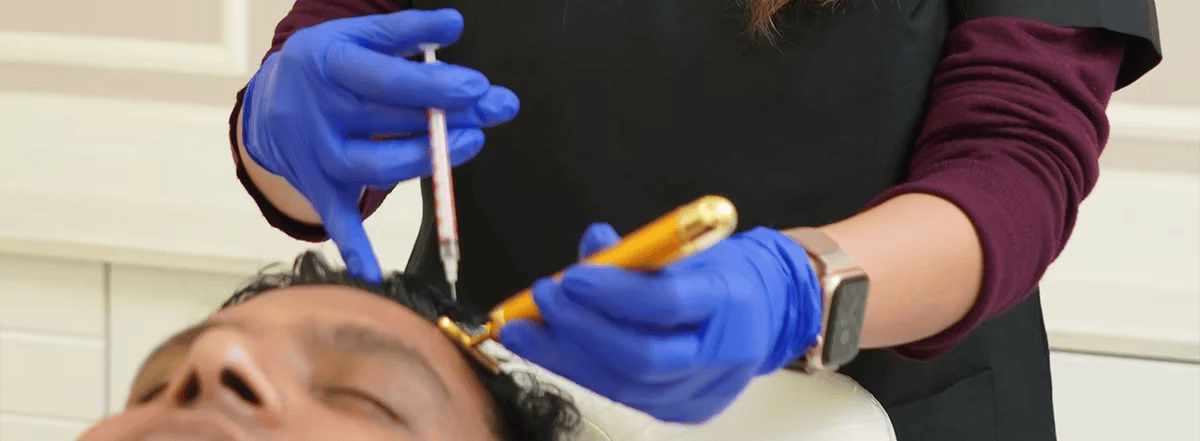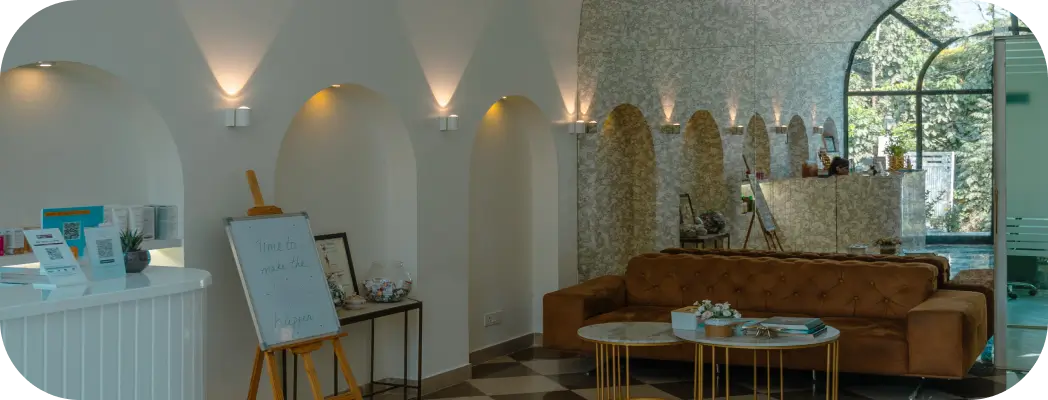
PRP hair loss
30 to 45 min
After a month and it gradually improves with every session
4 to 6 sessions
Minimal, chance of experiencing swelling, bruising, and tenderness to the touch for 24 to 48 hours.
Yes
Maintenance is required every 6-8 months
CUSTOMER TESTIMONIAL
Hear What Our Customers Have to Say
FAQs
Frequently Asked
Questions
How long does PRP last for hair loss?
Is hair fall PRP a painful procedure?
Who is an ideal candidate for hair fall PRP treatment?
Who should avoid PRP therapy?
AfterCare
- Avoid touching or massaging the treated area: This can cause the PRP to shift.
- Apply ice: This can help reduce swelling and bruising.
- Sleep on a pillow: This can help prevent the PRP from shifting.
- Avoid strenuous activity: This can increase blood flow and potentially lead to bruising.
- Avoid washing your hair for 24 hours: This can irritate the treated area.
- Use a gentle cleanser: Avoid harsh products that can strip the skin of natural oils.
- Don't use hot styling tools: These can damage the skin and hair.
- Refrain from using hair colors for 07 days.
- Severe pain or discomfort
- Excessive swelling or bruising
- Signs of infection (e.g., redness, warmth, pus)
- Changes in the treated area (e.g., unusual bumps or lumps)
In case you are currently searching for hair restoration treatments, you might have come across the term PRP which stands for Platelet-Rich Plasma.
First, let us talk about PRP. Imagine some vampire movie where the vampire is sucking your blood, but instead of making you one of them during night time, they use this blood as a magic potion that makes your hair grow. That’s how PRP works actually. What happens is that a small amount of blood is taken from the patient, which is then put into a centrifuge and spun, separating plasma from red cells.
The plasma is then injected into the scalp, stimulating cell renewal and blood flow all around the region, causing hair growth. Think of it like “Wake up fairies” who wake up dormant follicles with their invisible touch, and through which new tiny strands spring forth just like flowers sprouting in the garden at springtime.
To begin with, Advanced PRP could simply be characterized as regular PRP with something special in it. In simple terms, additional growth factors are incorporated into plasma before injecting it back into the scalp using the advanced PRP technique. These growth factors stimulate more hair follicles, leading to a faster hair growth process. Thus, these fairies could fly even higher because assistance has been given by adding fuel next time so that they do not sleep longer, only growing hairs.
PRP uses platelets, which are small cell fragments containing many growth factors, to stimulate healing and regeneration. The PRP process usually starts by obtaining a small amount of blood from your arm. This blood is then placed in a centrifuge where the platelet-rich plasma is separated from other blood components.
The resulting solution of PRP, packed with growth factors, will be injected into the areas where hair loss or thinning occurs on your scalp. The PRP procedure aims at waking dormant follicles, promoting hair growth, and improving the existing hair quality. It has minimal invasive effects that can have fantastic outcomes, making it a favorite option among men who seek to restore their hair.
Benefits of PRP
PRP provides non-surgical options for individuals looking for restoration solutions for their hair. These are beneficial because they help overcome hair loss and give self-assurance back through denser hair on the head.
Get in Touch with Us


